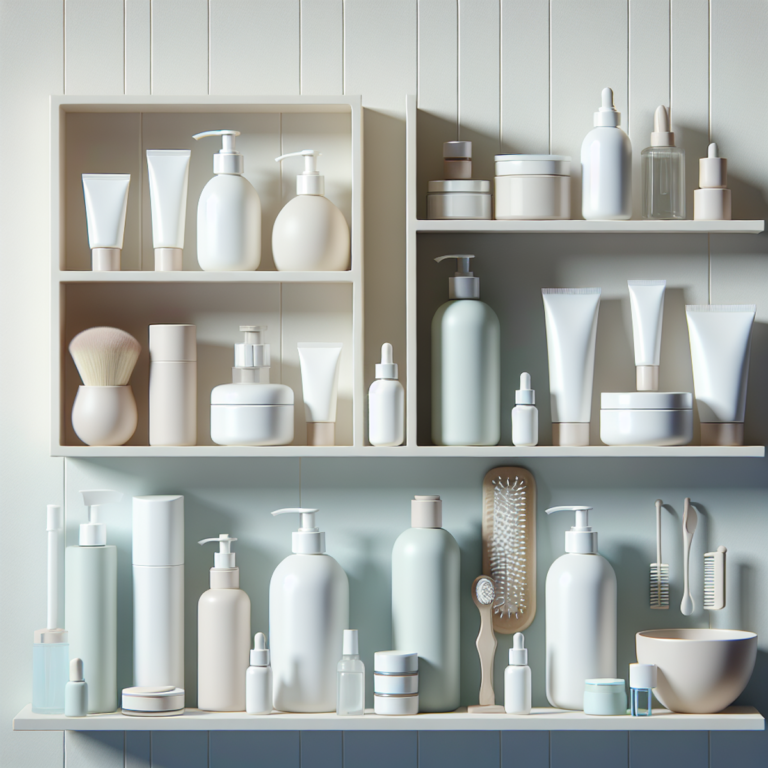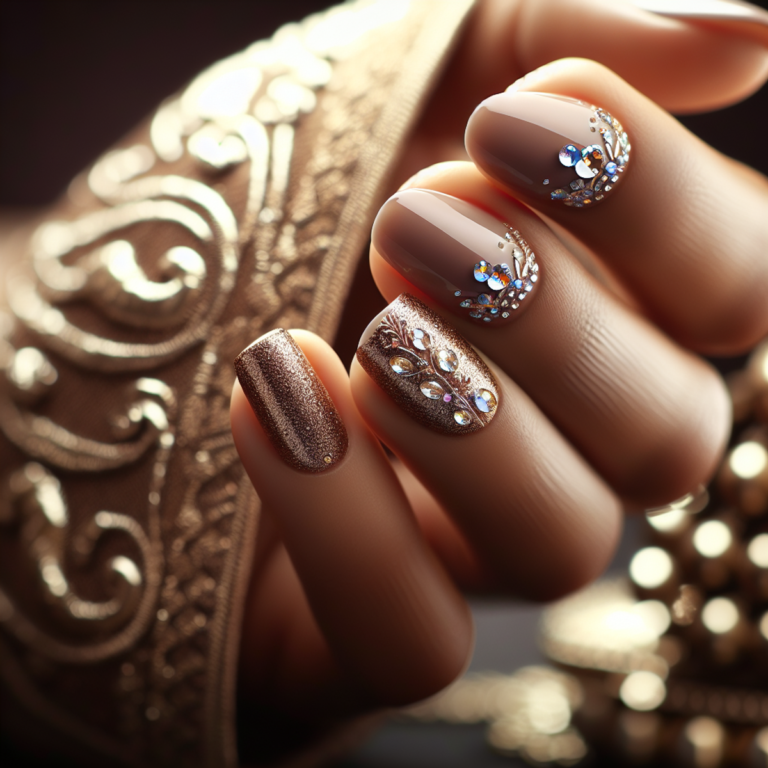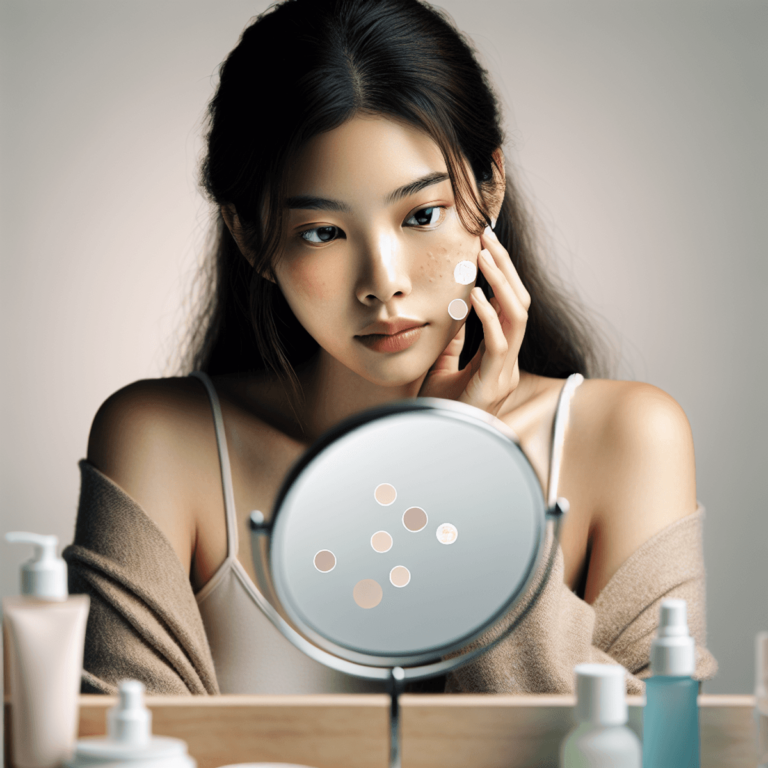Butt Acne: Causes, Treatment and Prevention

Introduction
Butt acne, commonly known as “buttne,” affects millions of people worldwide. This skin condition appears as uncomfortable bumps, pimples, or red spots on the buttocks area, causing both physical discomfort and emotional distress.
You might notice these annoying bumps showing up after intense workouts, during hot weather, or seemingly without any obvious cause. The condition can range from mild cases with a few scattered spots to severe outbreaks covering larger areas of the buttocks.
Key Facts About Butt Acne:
- Affects people of all ages and skin types
- Can occur year-round, with increased frequency during summer months
- Often mistaken for regular acne but requires different treatment approaches
- Highly treatable with proper care and prevention strategies
Understanding the root causes and available treatment options puts you in control of managing this common skin concern. With the right knowledge, you can take effective steps to prevent outbreaks and maintain clear, healthy skin in this sensitive area.
Understanding Butt Acne
Butt acne has specific features that make it different from facial breakouts. While facial acne is usually caused by hormonal changes and excess oil production, butt acne is mainly caused by mechanical factors and bacterial infections.
Key Differences from Facial Acne:
- Deeper inflammation beneath the skin
- Larger, more painful bumps
- Less connected to hormonal fluctuations
- Higher risk of bacterial infection
- Slower healing process
Common Symptoms:
- Red, inflamed bumps
- Small, pus-filled pustules
- Itching or burning sensation
- Dark spots after healing
- Tender or painful areas
- Clusters of similar-sized bumps
The appearance of butt acne can vary from small, scattered bumps to larger areas of inflammation. These bumps may feel firm when touched and can develop a white or yellow head. You may notice the affected area becoming more prominent after physical activity or sitting for long periods.
Unlike treatments for facial acne that focus on controlling oil production, butt acne requires specific attention to reducing friction and managing bacteria. The skin on your buttocks is thicker and exposed to different environmental factors compared to facial skin, so it needs different treatment methods.
Physical Characteristics:
- Located in areas prone to friction
- Often symmetrical on both sides
- Can spread if left untreated
- May leave temporary discoloration
- Tends to be more uniform in size
Causes of Butt Acne
Your daily habits play a significant role in the development of butt acne. The combination of tight clothing and extended periods of sitting creates the perfect environment for these uncomfortable bumps to form.
Friction and Moisture
- Tight-fitting clothes trap sweat against your skin
- Synthetic materials prevent proper air circulation
- Prolonged sitting compresses skin and hair follicles
- Workout clothes worn for extended periods create friction
Bacterial Growth Environment
- Trapped moisture promotes bacterial multiplication
- Dead skin cells accumulate in compressed areas
- Clogged pores from sweat and bacteria mixture
- Heat from friction accelerates bacterial growth
Folliculitis: The Primary Culprit
Folliculitis occurs when hair follicles become infected and inflamed. This condition presents specific symptoms:
- Red, inflamed bumps around hair follicles
- Tender or itchy skin in affected areas
- Small white-headed pimples
- Burning sensation in severe cases
The infection typically starts when Staphylococcus aureus bacteria enter damaged follicles. This damage often results from:
- Repeated friction against tight clothing
- Excessive sweating during workouts
- Poor air circulation in compressed areas
- Irritation from shaving or waxing
Physical Activities Impact
Your exercise routine can intensify the risk of developing butt acne:
- High-intensity workouts increase sweating
- Gym equipment harbors bacteria
- Compression gear traps moisture
- Delayed shower after exercise allows bacteria growth
These factors create a cycle where friction leads to irritation, bacteria multiply in the moist environment, and inflammation develops in hair follicles. Understanding these causes helps target effective treatment strategies for managing butt acne.
Other Factors That Can Cause Butt Acne
Boils
Boils are a severe type of skin infection that can occur alongside or be confused with butt acne. These painful lumps filled with pus form deep within hair follicles when bacteria enter the skin. Boils usually:
- Start as tender, red areas
- Grow into firm, painful lumps
- Range from the size of a pea to a golf ball
- Fill with pus as they develop
- May cluster together, forming carbuncles
Keratosis Pilaris
Keratosis pilaris creates a pattern of small bumps that many people mistake for acne. This genetic condition happens when there is an excessive buildup of keratin protein in hair follicles, resulting in:
- A rough texture similar to sandpaper
- Small bumps that are whitish or red in color
- Dry patches that are scaly
- Flare-ups that occur seasonally, especially during winter
- Symmetrical patterns on both buttocks
This condition affects up to 40% of adults and often runs in families. Unlike typical butt acne, the bumps caused by keratosis pilaris:
- Do not contain pus
- Rarely become inflamed
- Feel rough and dry when touched
- Respond better to moisturizing treatments
- May also appear on the arms and thighs at the same time
Treatment Options for Butt Acne
Getting rid of butt acne requires targeted treatments that address both the symptoms and underlying causes. Over-the-counter treatments serve as your first line of defense against mild to moderate cases.
Benzoyl Peroxide Products
- Concentrations between 2.5% to 10% work effectively
- Kills acne-causing bacteria
- Helps unclog pores and reduce inflammation
- Apply once daily, increasing to twice daily if needed
- Start with lower concentrations to minimize skin irritation
Salicylic Acid Solutions
- Available in strengths from 0.5% to 2%
- Exfoliates dead skin cells
- Prevents clogged pores
- Works best when used consistently
- Can be combined with benzoyl peroxide for enhanced results
Application Tips for Maximum Effectiveness
- Clean the affected area thoroughly before treatment
- Pat skin dry with a clean towel
- Apply a thin layer of medication
- Allow products to fully absorb
- Use non-comedogenic moisturizer after treatment
Treatment Duration
- Results typically appear within 4-6 weeks
- Continue treatment even after improvement
- Reduce application frequency once symptoms improve
- Stop use if irritation occurs
Spot Treatment Methods
- Apply ice to reduce inflammation
- Use hydrocolloid patches overnight
- Try tea tree oil diluted with carrier oil
- Consider alpha-hydroxy acids for stubborn spots
Remember to patch test new products on a small area first to ensure your skin doesn’t react negatively to the treatment.
When to Seek Prescription Medications for Butt Acne?
Persistent butt acne that doesn’t respond to over-the-counter treatments within 4-6 weeks requires medical attention. You should consult a dermatologist if you experience:
- Deep, painful nodules or cysts
- Widespread breakouts covering large areas
- Signs of infection (warmth, redness, swelling)
- Scarring or dark spots from previous breakouts
- Symptoms that interfere with daily activities
Your dermatologist might prescribe:
Topical Antibiotics
- Clindamycin
- Erythromycin
- Combined with benzoyl peroxide for enhanced effectiveness
Oral Antibiotics
- Doxycycline
- Minocycline
- Typically prescribed for 3-6 months
Other Prescription Options
- Retinoids for severe cases
- Specialized medicated cleansers
- Anti-inflammatory creams
These medications work by:
- Killing bacteria causing infection
- Reducing inflammation
- Preventing new breakouts
- Minimizing scarring potential
Your doctor might recommend a combination of treatments based on your specific symptoms and severity. Regular follow-up appointments help monitor progress and adjust treatment plans as needed.
Home Remedies for Butt Acne Relief
Natural remedies can effectively manage mild to moderate butt acne from the comfort of your home. Here are proven solutions you can try:
Tea Tree Oil Treatment
- Mix 3-4 drops of tea tree oil with a carrier oil like coconut oil
- Apply the mixture directly to affected areas
- Use twice daily for best results
Antibacterial Soap Routine
- Use gentle, antibacterial soap during showers
- Wash affected areas with lukewarm water
- Pat dry thoroughly to prevent moisture buildup
Additional Natural Solutions
- Apple Cider Vinegar: Mix equal parts water and ACV for a natural toner
- Aloe Vera: Apply pure aloe gel to reduce inflammation
- Witch Hazel: Use as a natural astringent to clean pores
- Green Tea Compress: Apply cooled green tea bags to soothe irritated areas
DIY Exfoliating Scrub
- Mix honey with brown sugar
- Gently massage the mixture on affected areas
- Use once weekly to avoid over-exfoliation
Essential Tips
- Never pop or squeeze the bumps
- Change clothes after sweating
- Use clean towels and washcloths
- Apply treatments consistently for best results
These remedies work best when combined with proper hygiene practices and preventive measures. Regular application helps reduce inflammation and prevents new breakouts from forming.
Prevention Strategies for Butt Acne Breakouts
A consistent cleansing routine is your first line of defense against butt acne breakouts. The key is to maintain proper hygiene habits throughout your daily activities.
Essential Prevention Habits:
- Shower immediately after workouts or sweaty activities
- Change out of wet swimsuits or gym clothes promptly
- Use fresh, clean towels for drying
- Pat the area dry instead of rubbing
- Apply non-comedogenic moisturizer to prevent skin barrier disruption
Shower Techniques for Prevention:
- Use lukewarm water – hot water can irritate the skin
- Cleanse with gentle, pH-balanced body wash
- Avoid harsh scrubbing or aggressive exfoliation
- Clean your shower tools regularly to prevent bacterial growth
Daily Habits That Make a Difference:
- Change underwear daily
- Keep your bed sheets clean – wash them weekly
- Avoid sitting for extended periods without breaks
- Use a clean towel or cushion when sitting on public surfaces
- Stay hydrated to help your body naturally flush toxins
Red Flags to Watch For:
- Increased sweating or moisture in the area
- Skin irritation from new products
- Friction from recent changes in exercise routine
- Signs of bacterial infection like redness or warmth
Creating a prevention routine doesn’t require complex steps – consistency with these simple practices helps maintain clear, healthy skin on your buttocks area. Regular attention to these habits reduces your risk of developing uncomfortable and unsightly breakouts.
Making Informed Clothing Choices to Prevent Butt Acne
Your clothing choices play a crucial role in preventing butt acne. The right fabric selection can make a significant difference in managing breakouts and maintaining clear skin.
Best Fabric Choices:
- Cotton – naturally breathable and moisture-wicking
- Bamboo – antimicrobial properties and excellent ventilation
- Moisture-wicking synthetic materials – designed for athletic wear
- Linen – lightweight and allows air circulation
Fabrics to Avoid:
- Nylon – traps heat and moisture
- Polyester – can irritate sensitive skin
- Spandex – restricts airflow when worn too tight
Your underwear selection deserves special attention. Choose cotton underwear that fits comfortably without squeezing. Replace tight thongs or synthetic materials with breathable alternatives that allow your skin to breathe.
Smart Clothing Tips:
- Size up in workout clothes to reduce friction
- Change out of wet or sweaty clothes immediately
- Avoid wearing the same workout clothes multiple times without washing
- Choose loose-fitting pajamas for nighttime
- Opt for workout shorts or pants with built-in moisture-wicking properties
For activities requiring tight clothing, like cycling or yoga, consider wearing a thin, moisture-wicking layer underneath your workout gear. This additional layer helps absorb sweat and reduces direct contact between tight clothes and your skin.
The Role of a Healthy Lifestyle in Butt Acne Prevention
Your skin health reflects your internal well-being. A balanced diet rich in specific nutrients can significantly impact your skin’s resistance to butt acne and other skin conditions.
Essential Nutrients for Skin Health:
- Vitamin A supports skin cell turnover
- Vitamin C boosts collagen production
- Zinc helps reduce inflammation
- Omega-3 fatty acids maintain skin barrier function
Foods to Include:
- Leafy greens
- Fatty fish (salmon, mackerel)
- Nuts and seeds
- Fresh fruits
- Lean proteins
Hydration’s Impact on Skin Health:
Drinking adequate water helps:
- Flush out toxins
- Maintain skin elasticity
- Support natural detoxification
- Reduce inflammation
Lifestyle Adjustments:
Here are some lifestyle changes you can make to improve your hydration and skin health:
- Aim for 8-10 glasses of water daily
- Limit processed foods and sugary drinks
- Include probiotic-rich foods
- Reduce dairy if you notice sensitivity
Exercise Benefits:
Regular physical activity promotes:
- Better blood circulation
- Enhanced nutrient delivery to skin cells
- Natural detoxification through sweating
Remember to maintain proper hygiene after workouts to prevent sweat-related breakouts. A balanced approach to nutrition and hydration creates an internal environment that supports clear, healthy skin.
Conclusion: Managing Butt Acne Effectively with Knowledge and Careful Choices
With the knowledge you have about butt acne, you can now take charge of your skin health. The first step towards clearer skin is to understand what causes your breakouts – whether it’s friction from tight clothing, bacterial infections, or lifestyle choices.
To effectively manage butt acne, you need to adopt a comprehensive approach:
- Prevention First: Opt for breathable fabrics and maintain good hygiene
- Swift Action: Treat breakouts promptly with suitable remedies
- Consistent Care: Follow your skincare routine diligently
- Smart Choices: Make informed decisions regarding your clothing and activities
It’s important to remember that treating butt acne requires patience and determination. Each person’s skin reacts differently to treatments, so you may need to experiment with different methods before discovering what works best for you.
Start taking control of your skin health today by putting these strategies into practice. With consistent care and a focus on prevention, you can attain clearer, healthier skin and boost your self-confidence.
FAQs (Frequently Asked Questions)
What is butt acne and how does it differ from facial acne?
Butt acne, also known as buttne, is a skin condition that manifests as pimples or bumps on the buttocks. It differs from facial acne in that it is often caused by factors such as tight clothing and prolonged sitting, rather than hormonal changes or excess oil production that typically affect the face.
What are the common causes of butt acne?
Common causes of butt acne include friction from tight clothing, prolonged sitting, hair follicle inflammation, and bacterial infections. These factors can lead to clogged pores and inflammation, resulting in the development of pimples.
What treatment options are available for mild cases of butt acne?
Over-the-counter treatments containing benzoyl peroxide or salicylic acid can be effective for mild cases of butt acne. These ingredients help to reduce inflammation and clear clogged pores.
When should I seek prescription medications for butt acne?
You should consider seeking prescription medications, such as topical or oral antibiotics, if you experience persistent or severe cases of butt acne that do not respond to over-the-counter treatments.
What home remedies can help relieve butt acne?
Home remedies for butt acne relief include regularly washing with antibacterial soap and applying tea tree oil. These methods can help reduce bacteria on the skin and soothe inflammation.
How can I prevent butt acne breakouts?
To prevent butt acne breakouts, maintain a consistent cleansing routine, shower after exercise, choose breathable fabrics, and avoid tight clothing. Additionally, staying hydrated and following a balanced diet can support overall skin health.










